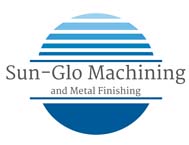If you ever collected jewellery, then you’ve probably already heard of gold plating. It’s a process by which a thin layer of gold is added to a specific metal. In jewellery creation, this is a cost-saver. You can build the bulk out of a more inexpensive metal, like silver or nickel, and then gold plate it to give the piece that more luxurious look. However, that isn’t the only application. When it comes to electronics, gold plating service actually add to the value of the components. Why? Because it has been proven to improve corrosion resistance and reduction of wear and tear on the component.
How does it work?
Essentially, a layer of gold is fused to the surface of another metal either via electroplating or electroless plating, wherein (in the simplest of terms) both metals become charged to allow them the gold layer to bond to the metal underneath. Gold plating services are offered in a variety of types. For instance: soft, pure gold plating, and bright, hard gold plating.
• Soft, pure gold plating, deposited from special electrolytes, can be used for wire bonding and circuit boards. It is semi-conductive (and thus can be used in the semiconductor industry), easily soldered and wire bonded, and ranges between 60-85 in Knoop hardness.
• Bright hard gold contains a lower concentration of gold, usually incorporating nickel and/or cobalt. These interfere with die bonding, which means these plating baths can’t be used for semiconductors. They can, however, be used for printed circuit board tabs and edge connectors, featuring a Knoop hardness of between 120-300 and a purity of 99.7-99.9% gold.
Gold plating services can also be distinguished by classes of chemistry. Alkaline gold cyanide is used for gold and gold alloy plating; neutral gold cyanide is used for high-purity plating; acid gold plating is used for bright, hard gold and gold alloy plating; and non-cyanide (sulphite or chloride-based) is used for gold and gold alloy plating.
Why choose gold plating?
There are a number of benefits to gold plating services. Gold plating is flexible for parts that need corrosion or wear resistance while still maintaining flexibility, it is non-reactive with other elements, it has a high electrical conductivity (which makes it excellent for electronics components), and it has high corrosion (deteriorative reaction of metal when exposed to things like oxygen) and wear (reaction to friction as well as hot, cold, damp, or dry climates) resistance. Gold plating is the most expensive option for electroplating, but it’s hands-down the best method for securing the quality and value of your product.
What are the applications?
Gold plating is commonly used in electronics components, most commonly in electrical connectors and printed circuit boards; however, it has other applications. As mentioned above, it can be used in jewellery manufacturing to provide a luxurious gold look atop a more cost-effective silver, nickel, or copper interior. Further, gold plating services can be used to create infrared reflectivity (it has 99% reflectivity in infrared wavelengths) and has been used by NASA to thermally control spacecraft instruments.
If you are thinking gold plating services for your next project, check out our website to learn more.
Sun-Glo Machining and Metal Finishing
quotes@sun-glo.com
800-741-1456
